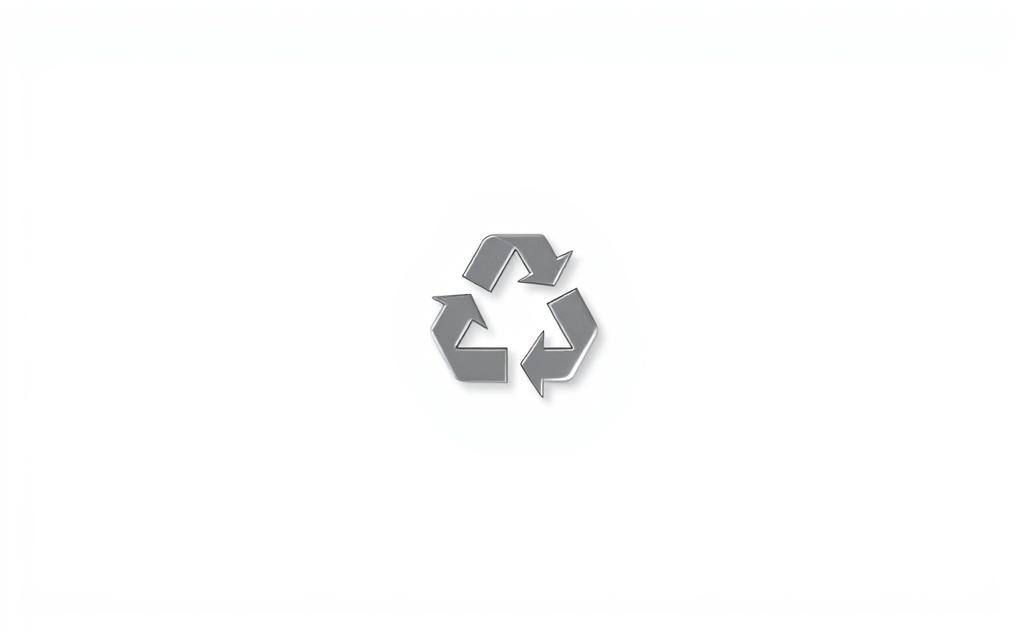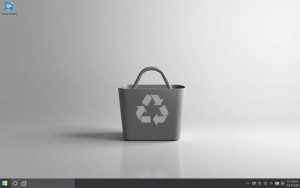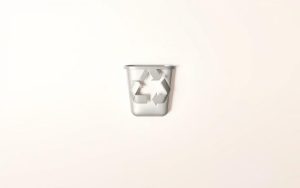Table of Contents
The Recycle Bin has been a fundamental feature of Windows operating systems for decades. It serves as a temporary storage space for files you no longer need, allowing you to recover them if necessary. However, some users prefer a cleaner desktop interface without the bin icon.
Removing the Recycle Bin from your desktop can be achieved through various methods. These include customizing settings, using the Registry Editor, or configuring Group Policy. Each method is compatible with Windows 11, 10, 8, and 7.
While the Recycle Bin cannot be permanently deleted, hiding it from the desktop can create a more streamlined workspace. It’s important to consider data recovery options before making changes, as modifying system settings can sometimes lead to accidental file loss. For more detailed guidance, visit this resource.
What is the Recycle Bin and Why Remove It?
Located in the upper-left corner of the desktop, the Recycle Bin is a key Windows feature. It acts as temporary storage for deleted files and folders, providing a safety net against accidental data loss. Items remain here until they are permanently removed or the storage limit is reached.
Despite its utility, some users prefer to remove the bin icon from their desktop. This is often driven by a desire for a minimalist workspace or to reduce visual distractions. It’s important to note that removing the icon does not delete the Recycle Bin itself—it simply hides it from view.
The Recycle Bin is deeply integrated into the Windows system, making it impossible to delete permanently. However, users can still access it through the File Explorer or the search function. This ensures that files can still be recovered even if the icon is hidden.
Common motivations for removing the bin icon include:
- A cleaner, more organized desktop.
- Reduced distractions for a focused workspace.
- Personal preference for a minimalist design.
For those considering this change, it’s worth exploring detailed steps to ensure a smooth transition. Whether you choose to hide the icon or keep it visible, understanding its role is essential for effective file management.
| Feature | Details |
|---|---|
| Default Location | Upper-left corner of the desktop (Windows 10/11) |
| Special Folder Path | ::{645FF040-5081-101B-9F08-00AA002F954E} |
| Function | Stores deleted files until permanent removal or storage limit is reached |
How to Delete Recycle Bin on Desktop Using Windows Settings
Windows offers built-in tools to personalize your desktop experience. By adjusting desktop icon settings, you can create a cleaner workspace. This method is straightforward and works across Windows 10 and 11.
![]()
Step 1: Access Personalization Settings
Start by right-clicking on an empty area of your desktop. From the context menu, select Personalize. This opens the Settings app, where you can navigate to the Themes section.
Step 2: Modify Desktop Icon Settings
Scroll down to find the Desktop icon settings link. Clicking this opens a new window with checkboxes for each icon. Uncheck the box next to the Recycle Bin to hide it from view.
Step 3: Apply Changes and Verify
Click Apply and then OK to save your changes. The Recycle Bin icon will no longer appear on your desktop. To restore it, revisit the same menu and recheck the box.
| Feature | Details |
|---|---|
| Settings Path | Right-click desktop → Personalize → Themes → Desktop icon settings |
| Compatibility | Windows 10, Windows 11 |
| Reversibility | Recheck the box to restore the icon |
Removing the Recycle Bin with Registry Editor
Editing the Windows registry allows advanced customization of your system. This method is ideal for users comfortable with system tweaks. However, modifying the registry carries risks, so always back up your data before proceeding.
Step 1: Open Registry Editor
Press Win + R, type regedit, and hit Enter. This launches the Registry Editor. Ensure you have administrative privileges to proceed.
Step 2: Locate the Recycle Bin Key
Navigate to the following path: HKEY_LOCAL_MACHINE\SOFTWARE\Microsoft\Windows\CurrentVersion\Explorer\Desktop\NameSpace. Here, locate the key with the GUID {645FF040-5081-101B-9F08-00AA002F954E}.
Step 3: Delete the Key and Restart
Right-click the key and select Delete. Confirm the action and close the Registry Editor. For changes to take effect, restart your computer.
For advanced users, a PowerShell alternative is available. Use the Remove-Item command to achieve the same result. This method is more efficient but requires technical expertise.
- Backup your registry before making changes.
- Ensure you delete the correct key to avoid system issues.
- Restarting your system is mandatory for changes to apply.
Compared to the Settings method, using the Registry Editor offers a more permanent solution. Changes persist through Windows updates, making it a preferred choice for advanced users. For more tips on system customization, check out this resource.
Hide the Recycle Bin Using Group Policy Editor
For users seeking advanced customization, the Group Policy Editor provides a powerful solution. This tool is ideal for Windows Pro and Enterprise editions, offering centralized control over system settings. By leveraging this feature, you can streamline your desktop experience with precision.

Step 1: Access Group Policy Editor
Begin by pressing Win + R to open the Run dialog. Type gpedit.msc and hit Enter. This launches the Group Policy Editor, where you can configure system-wide settings. Ensure you have administrative privileges to proceed.
Step 2: Configure Desktop Settings
Navigate to User Configuration → Administrative Templates → Desktop. Here, locate the policy labeled “Remove Recycle Bin icon from desktop.” Double-click the policy to open its settings.
Step 3: Implement Changes
Select the Enabled option and click Apply, followed by OK. This action hides the icon from your desktop. To reverse the change, revisit the policy and set it to Not Configured or Disabled.
This method is particularly beneficial for enterprise environments, where centralized management ensures consistency across multiple computers. It also eliminates the need for individual user adjustments, saving time and effort.
- Ensure your Windows edition supports the Group Policy Editor.
- Always back up your system before making changes.
- A system reboot may be required for changes to take effect.
By following these steps, you can achieve a cleaner, more organized workspace tailored to your preferences. For additional guidance, explore resources dedicated to Windows customization.
Accessing the Recycle Bin After Removal
Even after removing the icon, the Recycle Bin remains fully functional. This ensures you can still recover deleted files when needed. Accessing it is straightforward, with multiple methods available for convenience.
One of the simplest ways is using the search bar. Press Win + S, type “Recycle Bin,” and hit Enter. This opens the bin windows interface, where you can manage your files.

For a more direct approach, enter the special path ::{645FF040-5081-101B-9F08-00AA002F954E} into the File Explorer address bar. This instantly opens the Recycle Bin, bypassing the need for an icon.
Navigating through File Explorer is another option. Open it from the taskbar or Start menu, then locate the Recycle Bin in the left-hand navigation pane. This method is ideal for users who prefer a visual interface.
Third-party tools like EaseUS Data Recovery Wizard can also help. These tools are particularly useful for recovering permanently deleted files beyond the Recycle Bin’s scope.
It’s important to note that the Recycle Bin has storage limits. Once the limit is reached, older files are automatically purged. To avoid data loss, consider integrating cloud backup solutions for added security.
| Method | Steps |
|---|---|
| Search Bar | Press Win + S, type “Recycle Bin,” and hit Enter. |
| Direct Path | Enter ::{645FF040-5081-101B-9F08-00AA002F954E} in File Explorer. |
| File Explorer | Open File Explorer and locate the Recycle Bin in the navigation pane. |
Conclusion
Customizing your workspace in Windows can significantly enhance productivity and aesthetics. Whether you choose to hide the recycle bin through settings, the Registry Editor, or Group Policy, each method offers unique advantages. The settings approach is ideal for most users, providing a simple and reversible solution.
For advanced users, the Registry Editor offers deeper customization but requires caution and backups. Meanwhile, Group Policy is perfect for organizational environments, ensuring consistency across multiple devices. Remember, all procedures are reversible, allowing you to restore the icon if needed.
Before making changes, consider data recovery precautions to avoid accidental file loss. Tailoring your desktop to your preferences can create a cleaner, more focused workspace, boosting efficiency and satisfaction.
FAQ
Can I permanently remove the Recycle Bin from my desktop?
Yes, you can remove it using Windows Settings, Registry Editor, or Group Policy Editor. Each method offers a different approach to hide or delete the icon.
Will deleting the Recycle Bin erase my files?
No, removing the icon does not delete your files. You can still access deleted items through File Explorer or by restoring the icon.
How do I hide the Recycle Bin without deleting it?
Use Desktop Icon Settings in the Personalization menu. Uncheck the box next to the Recycle Bin to hide it temporarily.
Is it safe to use the Registry Editor to remove the Recycle Bin?
Yes, but proceed with caution. Editing the Windows Registry incorrectly can affect system functionality. Always back up the registry before making changes.
Can I restore the Recycle Bin after removing it?
Yes, you can restore it by revisiting Desktop Icon Settings or reversing the changes made in the Registry Editor or Group Policy Editor.
What happens to deleted files if the Recycle Bin is removed?
Deleted files are still stored in the system but won’t be accessible through the desktop icon. Use File Explorer to manage them.
Does removing the Recycle Bin affect system performance?
No, it only hides or removes the icon. System performance remains unchanged.
Can I remove the Recycle Bin on all user accounts?
Yes, using the Group Policy Editor allows you to apply changes across all user accounts on the computer.









